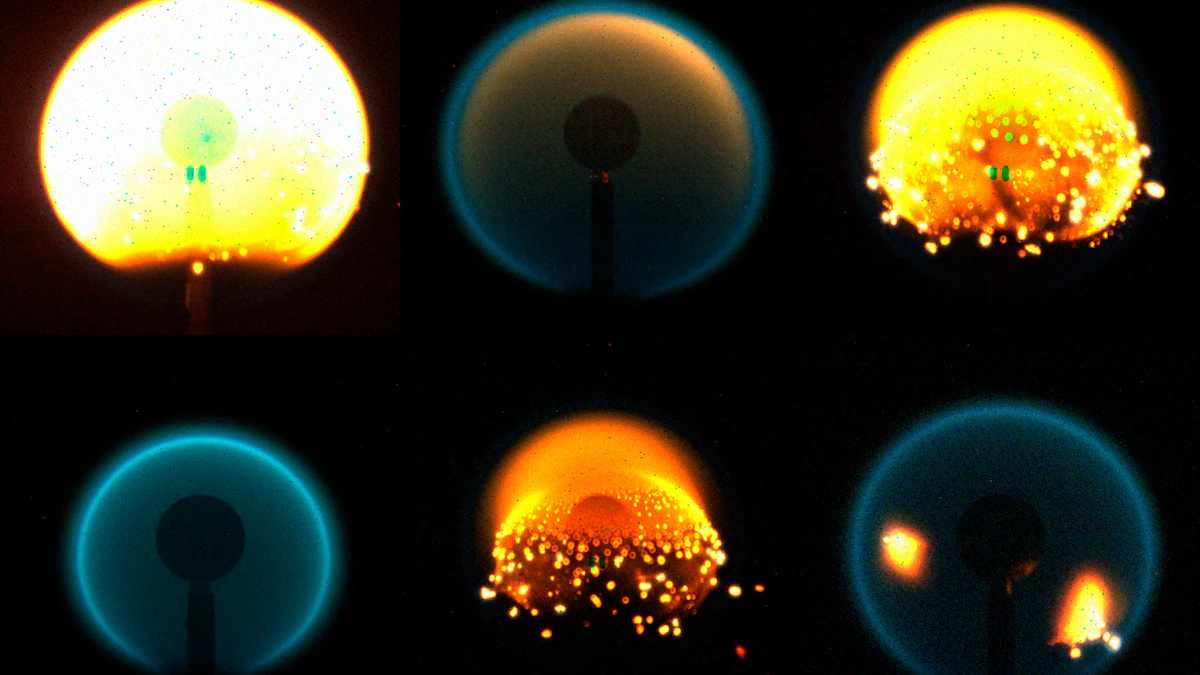- Magazine
- Breakthroughs
Science news includes fiery experiments on the International Space Station, threats to pasta sauce, and a comeback for macaws.
Published August 30, 2022
3 min read
Cosmic combustion
On Earth, we know flames as flickering tongues—but in space, that changes. Without gravity, hot air lacks the buoyancy to whip flames into their familiar, dancing forms. In microgravity they can swell into ethereal domes and orbs that can burn at a surprisingly cool 900 degrees Fahrenheit (a gas stove burner’s high setting is about 3100°F). The flames in the image above burned aboard the International Space Station, as part of ACME (short for Advanced Combustion via Microgravity Experiments). “I’ve had science fiction writers contact me about the flames,” says the University of Maryland’s Peter Sunderland, an ACME investigator. “They are otherworldly.” For more than four years on the station, ACME ignited over 1,500 flames, in tests aimed at improving spacecraft fire safety and computer models of combustion. And none too soon: Combustion of fossil fuels remains a massive source of carbon emissions and air pollution. —Michael Greshko
Climate change smacks tomatoes
Pizza sauce, pasta sauce, ketchup: Tomatoes star in many everyday foods. But in recent years, drought and extreme heat have blistered California, which grows about 30 percent of Earth’s processing tomatoes—hitting the crop hard and putting farmers and pizza lovers alike in a b

